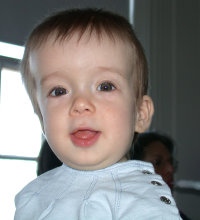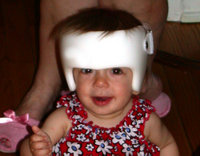BEN Carson will never forget that day last June. The famed pediatric neurosurgeon was in the midst of a delicate brain operation when a nurse handed him the telephone. On the other end of the line was his doctor. What he was told would change his life forever. The Detroit native (whose single mother, with a third-grade education, raised him to become one of the greatest neurosurgeons in the world) had prostate cancer, the high-grade type that spreads aggressively and kills at a high rate. He was told that he would need to have surgery fight away.
"I had asked that I be notified as soon as they found out," says Carson, who had undergone a biopsy after noticing he was urinating more often than usual. "I just didn't want to be worried about it. I have the ability to put things out of my mind. I have always been able to do that. I can very easily isolate things."
Carson, the director of pediatric neurosurgery at the prestigious Johns Hopkins Hospital in Baltimore, continued the operation. But shortly afterwards, he began to comprehend the enormity of that fateful telephone call. He had consistently performed what many call medical miracles, like the time he gained international prominence in 1987 after leading the first successful operation to separate Siamese twins attached at the back of the head. Now, at age 50, he was in need of a miracle himself. "The first thing that came to my mind was, `Wow, this is pretty devastating.' I had something that could potentially take me out."
The medical superstar, who had never spent a day in the hospital as a patient, says what worried him the most was the way his illness could possibly affect other people. "I wasn't really concerned about myself," he says. "When I die, I really don't consider that a horrible thing because I have always had a strong faith in God."
Carson says his wife Candy, whom he met as a student at Yale University, and the rest of his family took the news of his cancer hard. "I told my wife, and she was pretty upset. My kids were dumbfounded. But at the same time we all have a deep faith in God. So we prayed about it."
In the days that followed, instead of taking it easy or shutting himself off from the outside world, Carson continued to work. In fact, he worked harder than ever, performing more than 40 surgeries in two weeks. "I wanted to get all of my surgeries done because I didn't know how long I was going to be out," he says. "I didn't want a lot of stuff hanging over my head."
Carson performs between 400 to 500 operations a year, many involving congenital anomalies, like spina bifida, while other operations correct developing problems like brain tumors, craniosynostosis (a condition involving the skull which impedes brain growth), and seizures. In adults, he treats patients with trigeminal neuralgia, an extremely painful condition of the face.
At first, he considered keeping his illness from his patients and the public. "But [information] began to leak, and the rumors were unbelievable," he said. "People said I had a brain tumor, I had lung cancer, that I was going to die imminently, and that I was already dead."
To set the record straight, he issued a statement through the hospital explaining his health condition. "And the newspaper printed it on the obituary page," he says with a chuckle. "Within a few days, we were getting all kinds of condolence letters. People saw the story on the obituary page, and they thought I was dead."
Six weeks after his diagnosis, Carson underwent surgery in an attempt to remove the cancer. "[The process] wasn't as difficult as I thought it would be," he says. "I knew everybody, and I knew they were going to take care of me and make things as easy as possible."
Being a patient, Carson says, taught him how to treat his own patients better. "I try harder now to make sure patients have as much information as possible, not only pre-op, but during the course of their recuperation," he says. "I try to make sure even more now that they know what to expect from day one, day two, day three, from week one, week two, week three."
During the course of Carson's surgery and recovery, he had questions for his medical team. He says he took a very active role in the process, looking at his own scans and x-rays, even seeking second opinions.
Carson found out within hours of the surgery that the operation had been a success. But he also learned something that rocked him to his foundation: The cancer was only one millimeter (as close as it could get) from breaking through his prostate gland, and spreading to other parts of his body.
During his recovery, he received so many flowers, cards and visitors that a security guard had to be stationed outside his room. "The outpouring was unbelievable," he says. "Bags of cards and letters, everybody from the janitors in the hospital to President and Mrs. Bush, saying that they were praying for me. I was getting letters from church congregations, the Netherlands, Australia, Africa, South America. I realized then that a lot of people cared about me."
Months after the surgery, Carson has had no complications. He did not have to undergo chemotherapy or radiation treatments. "I'm totally not worried," he says. "There's no chance of it coming back [after removal of the prostate gland], unless I grow another prostate. That would really be a story."
Carson said his life-and-death battle with cancer has opened his eyes to the disease. "I was always very interested in cancer. I was spending a lot of time researching therapies for cancers that exist, now I'm looking more at root causes of cancer and how it can be prevented," he says. "It made me much more aware of the whole epidemiology of cancer, and particularly prostate cancer, which is rising rapidly in our society, as is breast cancer."
With one in every three men getting prostate cancer, and one in every eight women getting breast cancer, Carson believes there is cause for great concern. "There certainly seems to be some dietary connection to cancer rates," says Carson, who now emphasizes how it important it is for men, particularly Black men, to get their prostate checked. "And clearly there are environmental issues. Pesticides, water contamination, the list goes on and on. It seems that the more highly sophisticated society gets, the more cancer there is. We have to find better ways to control it."
Carson changed his diet to include mostly organic fruits and vegetables. He says stress also has a direct correlation to cancer, one possible reason why neurosurgeons have a much shorter life expectancy than the average population. "I tried to really cut back on stress," says the doctor, who continues to perform surgery almost every day he's at work. "Now I get in at 7 a.m. and go home now at 6:15 p.m. every day. Before it was 8 p.m. Now everybody knows that I'm leaving at 6:15. Unless there is a dire emergency, I'm out of here."
Since returning to work, Carson says he has learned to manage his time better, getting the same things done and managing to get home earlier. "I feel much more relaxed," he says. "I'm not so tired ... I can spend much more quality time with my family."
That quality time includes walks with his wife and enjoying his passion shooting pool. He continues his busy public speaking engagements, many times traveling across the country several times a week to speak to medical groups, schools and business leaders.
Carson says his previously strong faith has only increased since his battle with prostate cancer. He says he asked God for strength to make it through his surgery, as he does with every surgery that he performs. "I pray before every surgery," he says. "I figure if He created the body, He sure knows how to fix it."
COPYRIGHT 2003 Johnson Publishing Co.
COPYRIGHT 2003 Gale Group




